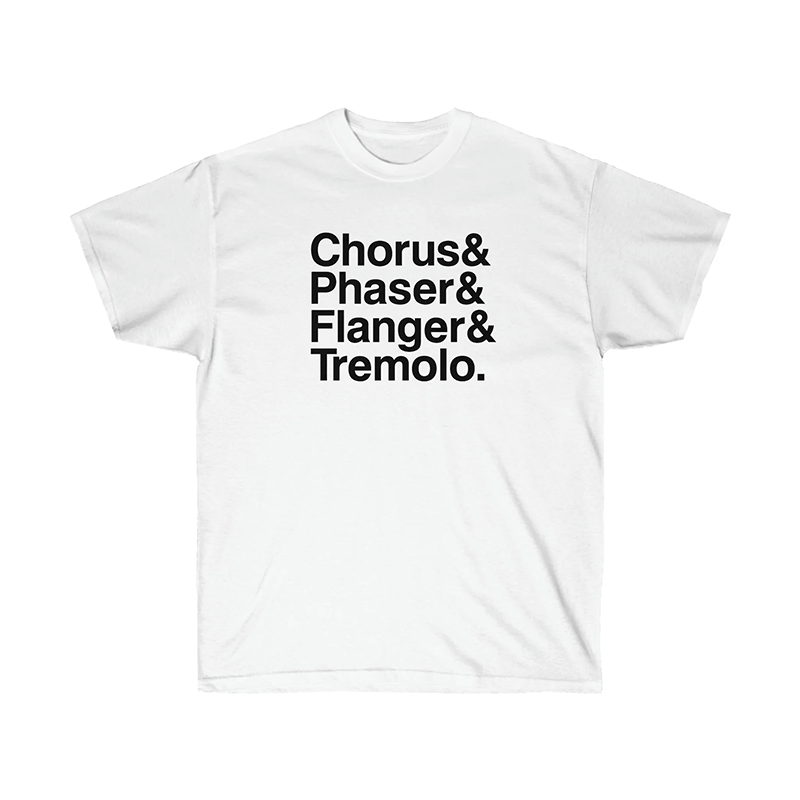(This article comes from our friends at GuitarTricks.com – check out their site for tons of guitar-related tips and tricks!!)
The Buzz on Distortion Pedals
By Shawn Leonhardt for Guitar Tricks and 30 Day Singer
Ever since the electric guitar was invented guitarists and sound engineers have attempted to manipulate its signal. When you pluck the strings, the pickup changes sound waves into electrical energy, which can then be altered in a variety of ways. If you want your guitar to have a dirty and gritty tone you would change its signal with a distortion pedal.
A Quick History of Distortion
The guitar was never that popular in the days of ragtime, jazz, and swing because the acoustic had a difficult time competing with its volume. Once amplification arrived, the electrified guitar became a viable instrument in the band, and even in the lead. Early blues guitar players like Muddy Waters and Howlin’ Wolf wanted their guitar to have a dirty and raw sound to match their style.
On early vacuum tube amplifiers the guitar player could simply turn the gain or power up beyond the recommended level to get the first “distorted” sounds. This helped define the blues and R&B genre and show that the new electric guitar was great for cutting through the mix. In 1951 Ike Turner’s guitarist Willie Kizart broke the cone on his tube amp on the way to record the hit “Rocket 88.” Sam Phillips decided the accidental distortion fit perfectly, and the rest is history.
This created a tradition of artists purposely damaging their amps to get a desired sound! Link Wray poked a hole in his amplifier cone to get the rumble for the aptly named hit song “Rumble.” Later Dave Davies of The Kinks slashed his speaker cone with a razor blade to get more of a fuzzy distortion. Eventually though, engineers began to build effects units and early pedals to facilitate this fuzz, grit, or distortion without destroying equipment.
Ways to Distort the Guitar
Plenty of beginner guitar songs use heavy distortion. Whether you do it through damage or a pedal, there are multiple ways to get a distorted signal. The easiest way to achieve it is overdriving the signal and leading it to clip. The clipping of the signal creates other harmonic overtones with the original signal. If you play more than one note there will be even more subharmonics created. Heavy metal and punk use power chords for their song structure because the distorted tones create harmonics essential to their style.
Clipping can be soft where we try to keep lower overdrive peaks, or it can be hard with very sharp peaks. If we push too hard it will soon sound harsh and resemble a square wave. If we purposely push for square waves and complex overtones the signal will create the well-known “fuzz” sound heard on “I Can’t Get No Satisfaction.” One early pedal that produced this tone was the Fuzz Face and it was incredibly popular with Jimi Hendrix, David Gilmour, Pete Townshend, and many 1960’s rock musicians.
For a warmer and more harmonic distortion, guitarists mostly relied on valve overdrive in their tube amps. But tubes were not always reliable, could vary in sound, and were heavy! As computer technology brought about semiconductors, transistors and solid-state effects units soon replaced tubes. This advancement made it possible to start mass producing smaller pedals that could delay, compress, alter, and especially distort the guitar signal.
Modern Distortion Pedals
Besides the Fuzz Face, Jimi Hendrix was also a fan of the fuzz box the Big Muff. This pedal was lauded in the 1970’s by Pink Floyd, Thin Lizzy, and even made a 1990’s comeback with bands like Bush and Mudhoney. Usually the guitarists that are looking for a very growling sustained grind will find Big Muff like fuzz pedals to fit that sound best.
Some bands do not always want that harsh of an overdrive or distortion, or they simply want a different overtone vibe. The earliest overdrive pedals were the Boss DS-1, Ibanez Tube Screamer, and MXR Distortion +. Randy Rhoads used the heavy metal crunch of the MXR when playing with Ozzy Osbourne. Depending on how gritty you want your sound to be will determine the settings you use.
Even blues guitarists and pop rock artists will often have some form of overdrive pedal on their board. It doesn’t always have to be used in a hard or heavy clipping way, sometimes you just want your guitar to have a slight kick. Remember that the pedal is not the only factor in distortion as the tone can also be shaped by the amplifiers and any tone controls it may have.
There are now a huge amount of fuzz and distortion pedals on the market that mostly attempt to emulate the original effects boxes. The Boss JB-2 Angry Driver and MXR M75 Super Badass distortion pedals are modern tweaks on old classics. Because semiconductor technology has expanded even further, these new distortion and fuzz boxes allow for more nuance and control of the tone. Newer pedals also allow for a much larger dynamic range to suit the genre or style you are playing.
Another major tech leap is the software emulation of analog hardware. Guitar pedals and amplifiers are not cheap, but software now allows you to try out effects pedals with apps and plugins. Some musicians will claim analog sounds better, and they may be right, but digital effects are the future and an incredible educational tool. If you are new to distortion or any guitar effects, practice your signal chains and tones on software. See what pedals appeal to you before taking the analog plunge!
If you play electric guitar it is wise to have an overdrive, distortion, or fuzz pedal. With modern pedals you may be able to find one that suits your needs for all levels and methods of sound clipping. Some of the larger pedals have a surprising number of parameters to dial in! Whether you require a light blues kick or a death metal thrashing, distortion pedals and effects are an essential part of the chain! Pay close attention to your guitar knobs, pedal, and amplifier settings and you will find the perfect amount of distortion for your guitar tone!
____________________
Affiliate Links:
Sweetwater – https://bit.ly/3rGiLeA
Perfect Circuit – https://bit.ly/3pHpS6P
Amazon – https://amzn.to/3FN04Mq
GET EXCLUSIVE UPDATES, CONTEST INFO, SEE OUR LATEST DEMO VIDEOS AND MORE:
















